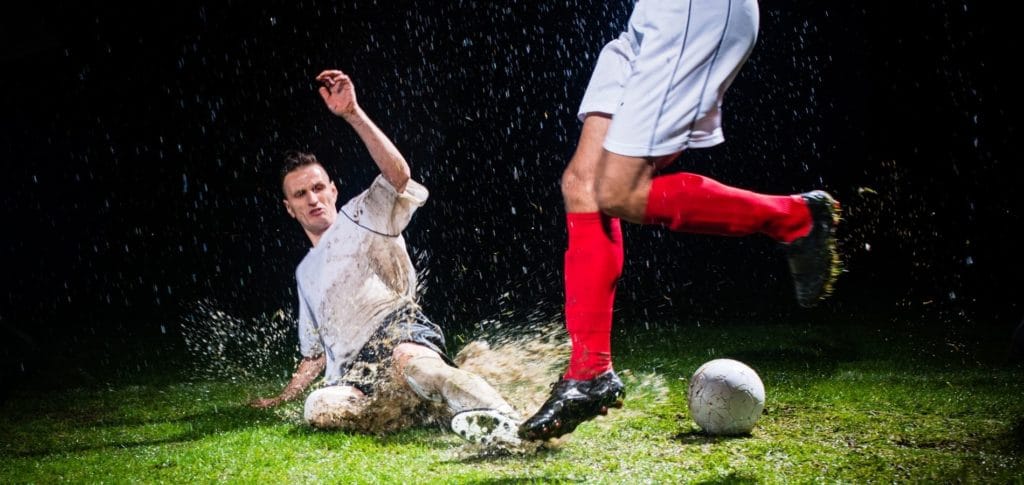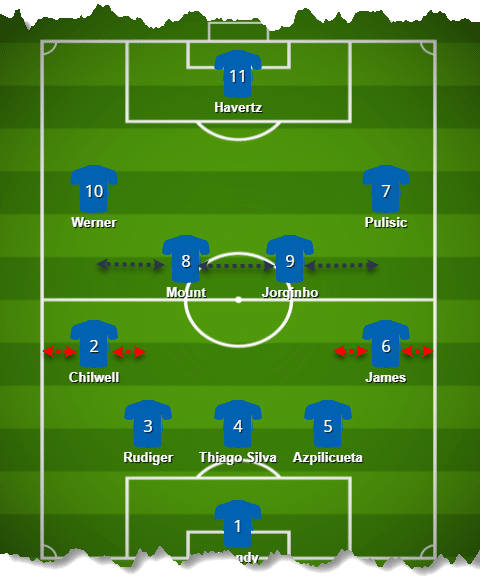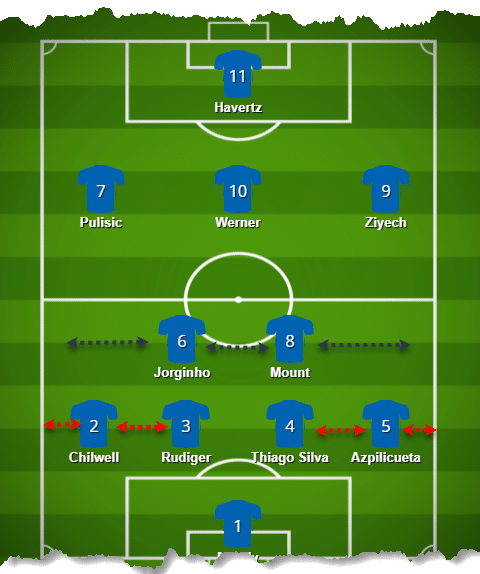Football is a contact sport that involves a considerable amount of running from the players that participate in it.
With sticking the ball in the back of the opposition net being the overall objective, the game naturally gravitates towards covering large distances on the field in order to get into good positions to score or, on the flip side, to protect and consolidate winning positions through defensive positioning.
This therefore begs the question of which soccer position usually does the most running during a competitive game.
And the definitive answer is that midfielders cover the most distance, as the role requires them to fulfil attacking duties by making runs into the opposition area; supporting forwards by availing themselves as an ideal passing option, together with performing defensive responsibilities such as tracking back and blocking runners.
Now let’s explore this in further detail…
Reasons why midfielders cover the most distance
Firstly, even a casual fan should be able to deduce that goalkeepers run the least of any player on the pitch just by making simple match observations.
However, the difficulty in determining which soccer position runs the most then comes in when evaluating the other remaining roles – midfielders, defenders and to a lesser extent forward players.
There are a couple of factors which illustrate why the midfield position predominantly accumulates the most territorial coverage out of the three, and I’ll now look at each one.
1. Fulfilling both attacking and defensive duties

As I had alluded to earlier in the introductory part of this article, central midfielders are tasked with a multi-faceted role that involves playing an instrumental part in both the attacking and defensive phases of play, as well as the different transitions that usually take place in between each phase.
So, a standard central midfielder can generally be expected to:
- Retrieve the ball in deeper areas from opposition midfielders and forwards
- Track back to cover half spaces and pockets in the defensive third of the pitch
- Commit to tackles and blocking shots
- Press high if the tactical set up demands this approach
- Break away into the opposition area to attempt to score from cut backs and crosses made by team mates
You only need to think more precisely about certain elements of play to be able to deduce that midfielders run quite a lot during a game.
For example, when a defender makes a clearance, the midfielders will push forward in order to compress the space that the opposition will have at their disposal if they are able to regain possession.
Whilst this is taking place, strikers will either be jostling for the ball in the air with opposing defenders or trying to stay onside by making small walking or jogging movements towards their own goal – actions that clearly don’t involve a lot of running.
On the other hand, when a team has the ball in central areas of the pitch, midfielders use their versatility by availing themselves for short or long passes by way of jogging or sprinting to where free space lies, along with attempting forward runs that drag defenders out of position and enable the strikers to lose their markers.
At this point in the game, defenders are usually stationary or slowly walking forward to play opposition forwards offside – again, actions that don’t rack up mileage in terms of distance covered.
Udinese’s star player Rodrigo de Paul is the perfect example of a complete midfielder who is able to consistently excel in an all-encompassing role.
2. Lateral movement
Arguably, the wing back position covers considerable distances due to the demands of the role which require a player to provide both offensive and defensive support down the entire flank.
But there is an important distinction that gives midfielders the edge when it comes to distance covered, and it lies in what is called lateral movement.
This refers to an athlete’s ability to effectively move sideways, which is in other words from left to right or vice versa whilst facing northward/southward.
During a competitive game, you’ll often notice that defensive midfielders playing in a either a double or single pivot will shuttle horizontally across the pitch in order to position themselves better to cut out through ball attempts or runs from opposition playmakers as an attack progresses.
Although wing backs are also required to move laterally, they do so to a lesser extent than the former, mainly due to the fact that defenders are positioned much closer together in a back five during defensive phases of play and therefore have less lateral distance to cover as opposed to the players in a midfield two or three.
You can see this point clearly illustrated below:

This also holds true for full backs within a defensive back four as part of a 4-2-3-1 formation.

For even greater insight on the different soccer positions and roles, I’d suggest you check out some books on football tactics that I’ve previously recommended.
3. Marathon-like running intensity
The last point is very simple.
Whereas strikers and defenders cover most of their distance within a game through short bursts of pace to latch onto a through ball or to chase an opposition attacker respectively, midfielders will make much more frequent movements at regular intensities.
So, when a lone striker is isolated further upfield, midfielders are often running to protect the backline through covering spaces and pressing the opposition.
And at the same time, the defenders are likely to be holding their line and tightly marking forwards.
This is backed up by an empirical study which purports that full backs display superior high-intensity running profiles compared to other positions and that midfielders cover the greatest overall distances in a game at around 11.5 kilometres whilst defenders and forwards clock in at the 10 kilometre mark.
Further statistical evidence proving that midfielders run the most
Now it’s all well and good claiming that midfielders run the most based on my own experience of having played and watched the sport over a number of years.
But without the numbers to back these points up, the entire basis of entire article becomes moot.
So, I managed to conduct a bit of research on this topic and found something quite interesting.
Record runners in a game
For the 2019/2020 Premier League season, each club’s record runner within a game in terms of distance covered all play in a midfield position:
This is a significant indicator that midfielders usually cover the lion’s share of the yards in competitive games.
Total distance covered
More so, Southampton’s James Ward-Prowse – who plays as a midfielder – led the charts for overall distance covered in the 2019/2020 season with 334.6 kilometres ran.
And there’s even more backing for midfielders topping the distance charts, as below Ward Prowse in these particular standings are Declan Rice, Abdoulaye Doucoure, Jack Cork and Roberto Firmino, in that order.
This means that four out of the top five places for the distance covered standings are held by footballers who play in midfield roles.
Final thoughts
So, which position runs the most in a soccer game?
Well, midfielders clearly cover greater distances than other playing positions because their role is an all-encompassing one that involves supporting forwards by roaming into advanced attacking positions and shielding defenders by retreating back into deeper pitch territory, as well as making lots of lateral movements which strikers, defenders and goalkeepers themselves don’t often have to perform.
I hope this article was able to answer the question with adequate depth and good insight. If you have any related thoughts feel free to share them in the comments section down below.
If you enjoy the content that I create and would like to buy me a coffee, then I’d really appreciate it!
Any money that I earn through this donation will be re-invested into more content for this website.
Additionally, by sending in a donation you’ll also receive a copy of my recently released 190+ page eBook on Soccer Ball Care, as well as be subscribed to our mailing list where you’ll be regularly informed on the latest developments concerning the Soccer Whizz blog.
- Future Icons: Europe’s Emerging Midfield Maestros Set for Glory - December 4, 2023
- Kickstarting a Revolution: How Soccer Transformed the United States Over the Last Four Years - October 7, 2023
- 4-1-4-1 Soccer Formation [Analysis] - September 23, 2023

